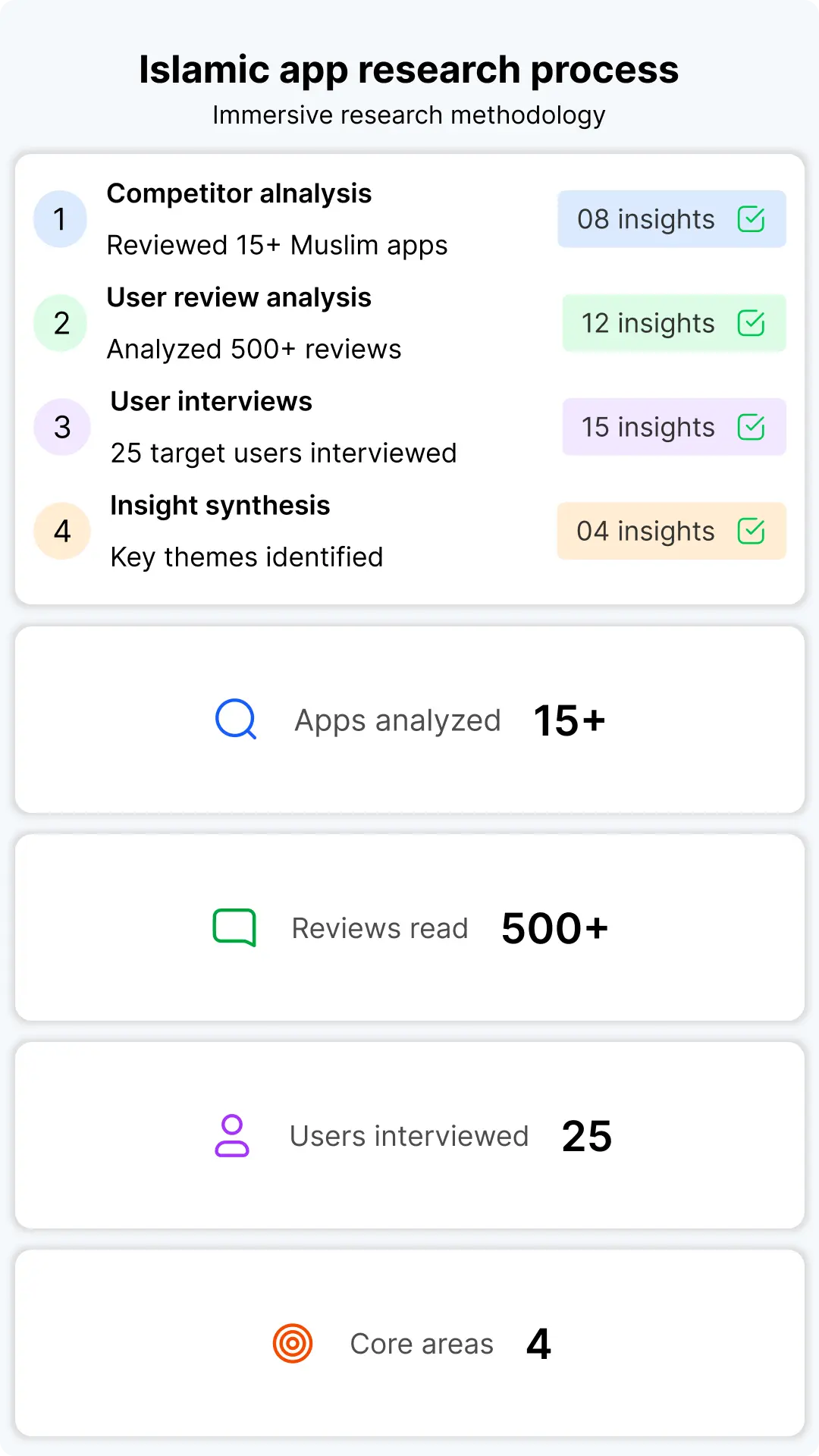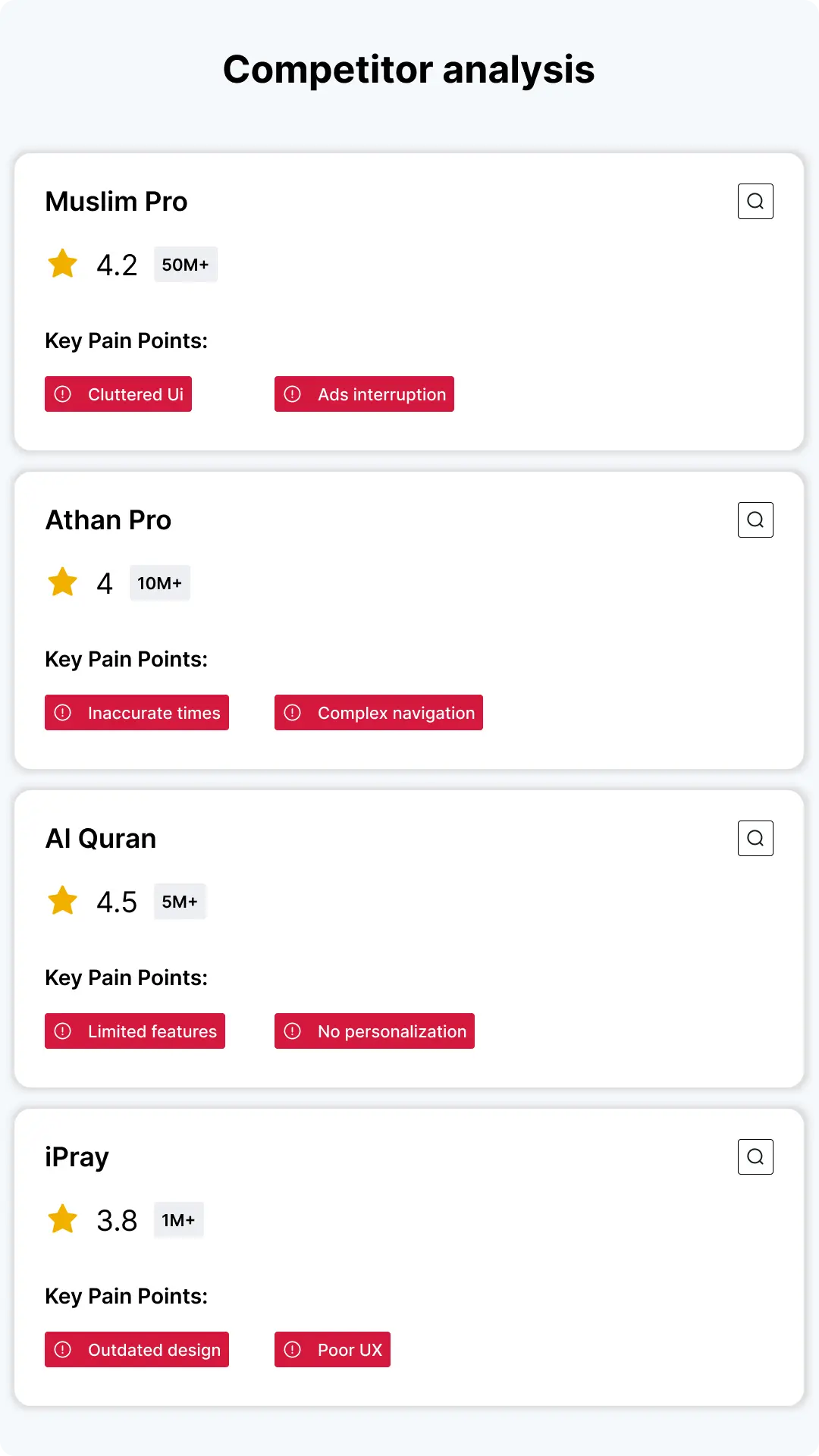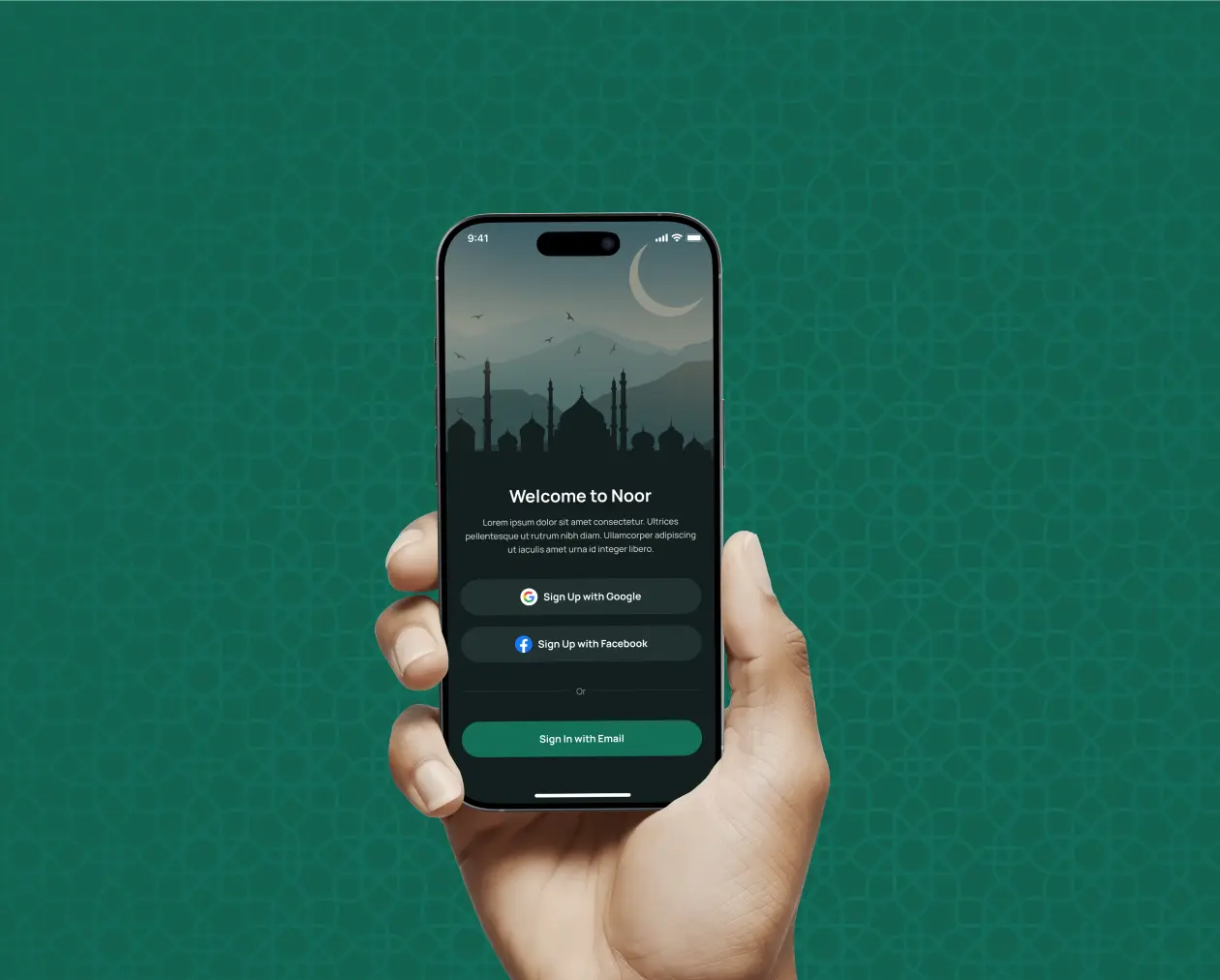Noor – Islamic Lifestyle Companion App
Noor is a mobile app designed to support Muslim users in their daily spiritual practice through tools like Quran access, prayer tracking, Qibla direction, and curated content—all in a calm, easy-to-use experience.
Project
Noor – Islamic Lifestyle Companion App
Category
Ui/Ux Design
Mobile App Design
Religious & Educational Tech
Client
Confidential (Faith-Tech Product Concept)
Year
2025
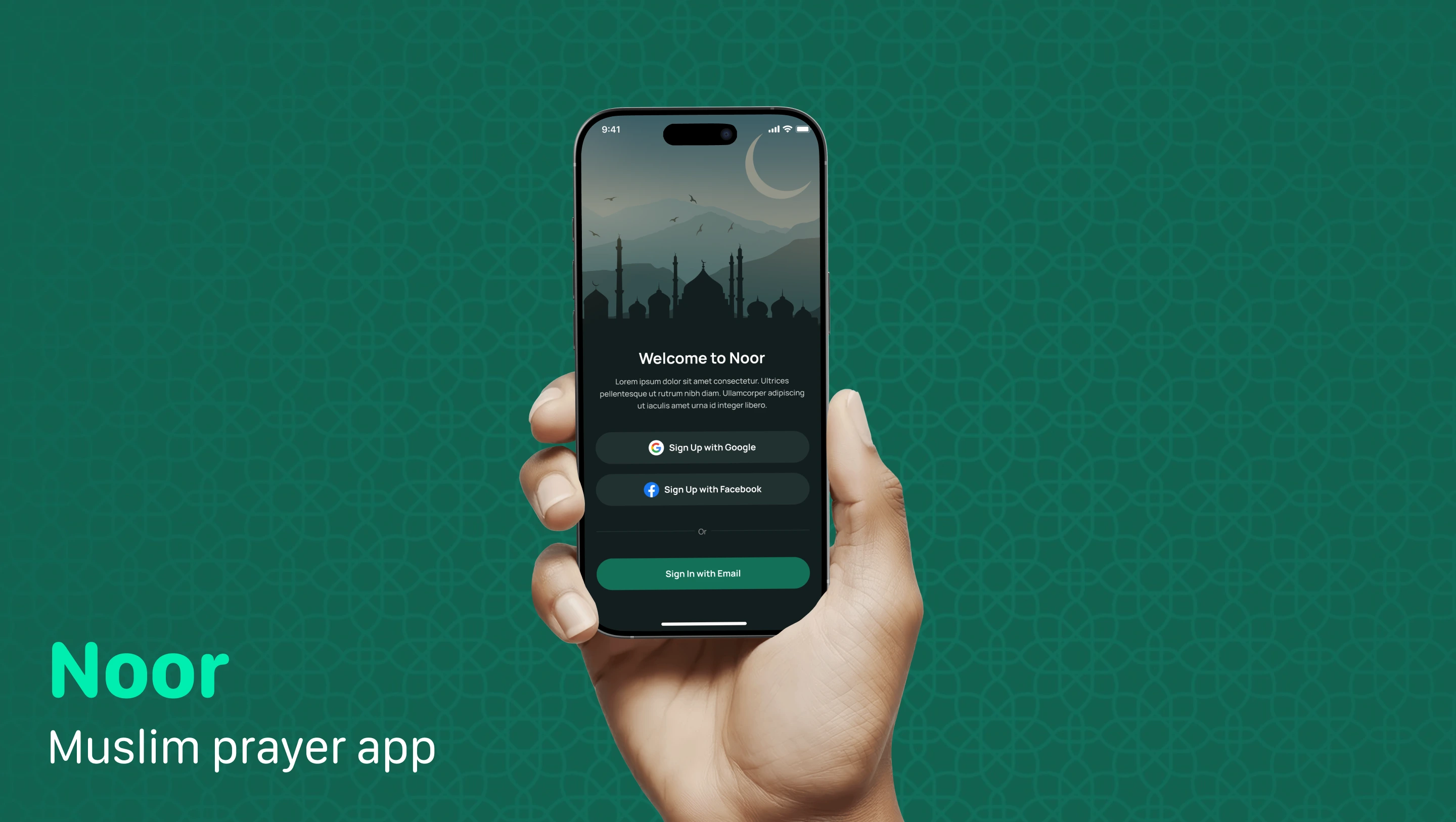
The Starting Point
Noor was envisioned as a modern Islamic lifestyle app that offers more than just functionality—it was meant to create a spiritual connection. The product aimed to unify daily essentials like Quran access, prayer tracking, faith-based content, and tools like Qibla direction and mosque discovery.
The challenge was designing a cohesive, emotionally resonant experience without overwhelming users or fragmenting the flow. The goal was to blend usability with meaning, creating a space that felt both practical and spiritually uplifting.
As the sole product designer, I led the full design process—from research and concept to UI execution and developer handoff. I worked closely with the product manager to prioritize features and collaborated throughout with developers to ensure the interface was practical, accessible, and easy to build.
Immersive Research
To build something that truly resonated, I started by researching both product benchmarks and user pain points. I reviewed competing Muslim apps and read hundreds of user reviews to identify frustrations common themes included cluttered interfaces, inaccurate prayer times, and lack of personal connection.
I also conducted short interviews with target users to understand what made an Islamic app feel useful, authentic, and trustworthy. These insights helped me narrow focus to four core areas: Quran, Prayer Times, Qibla, and curated faith-based content.

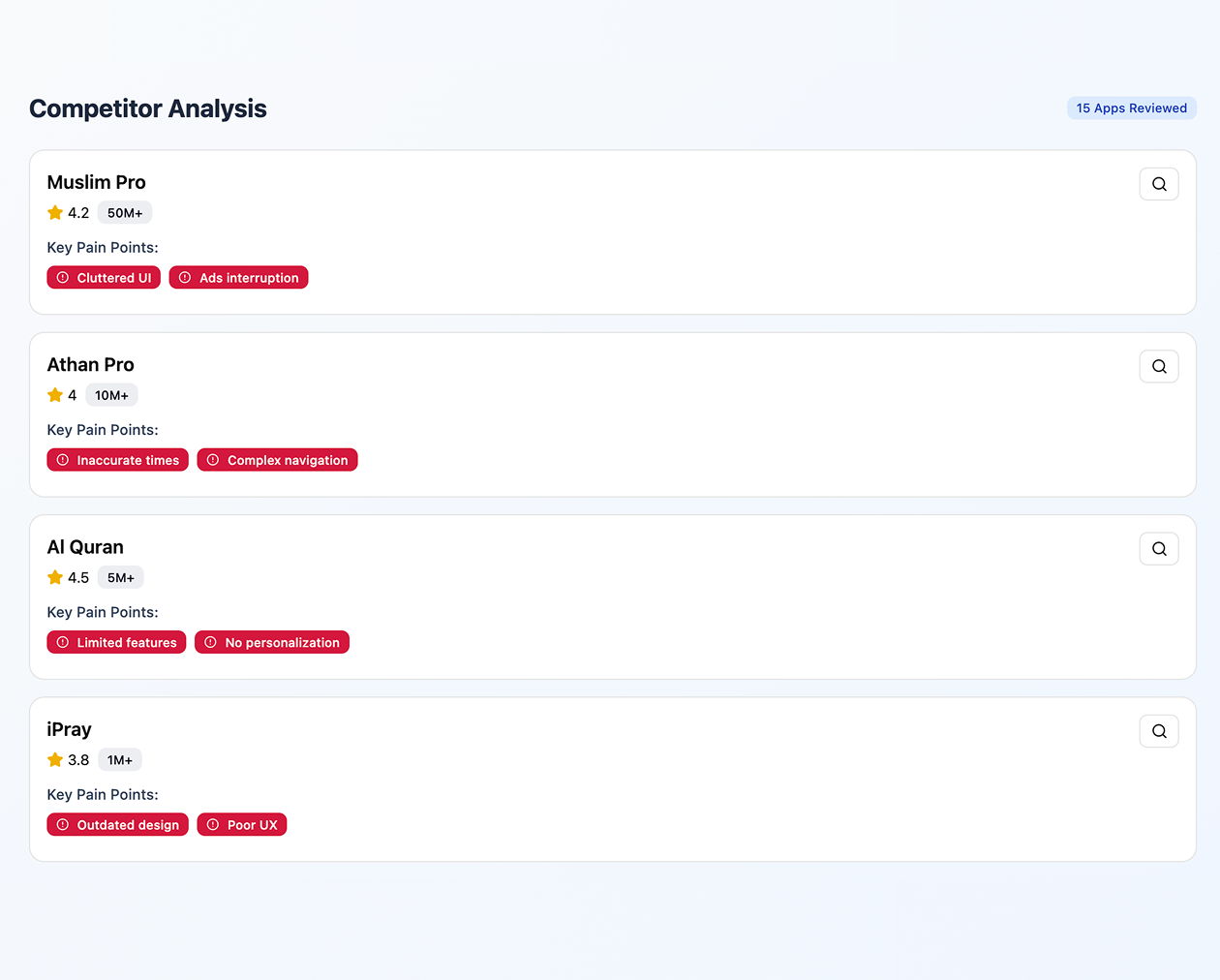
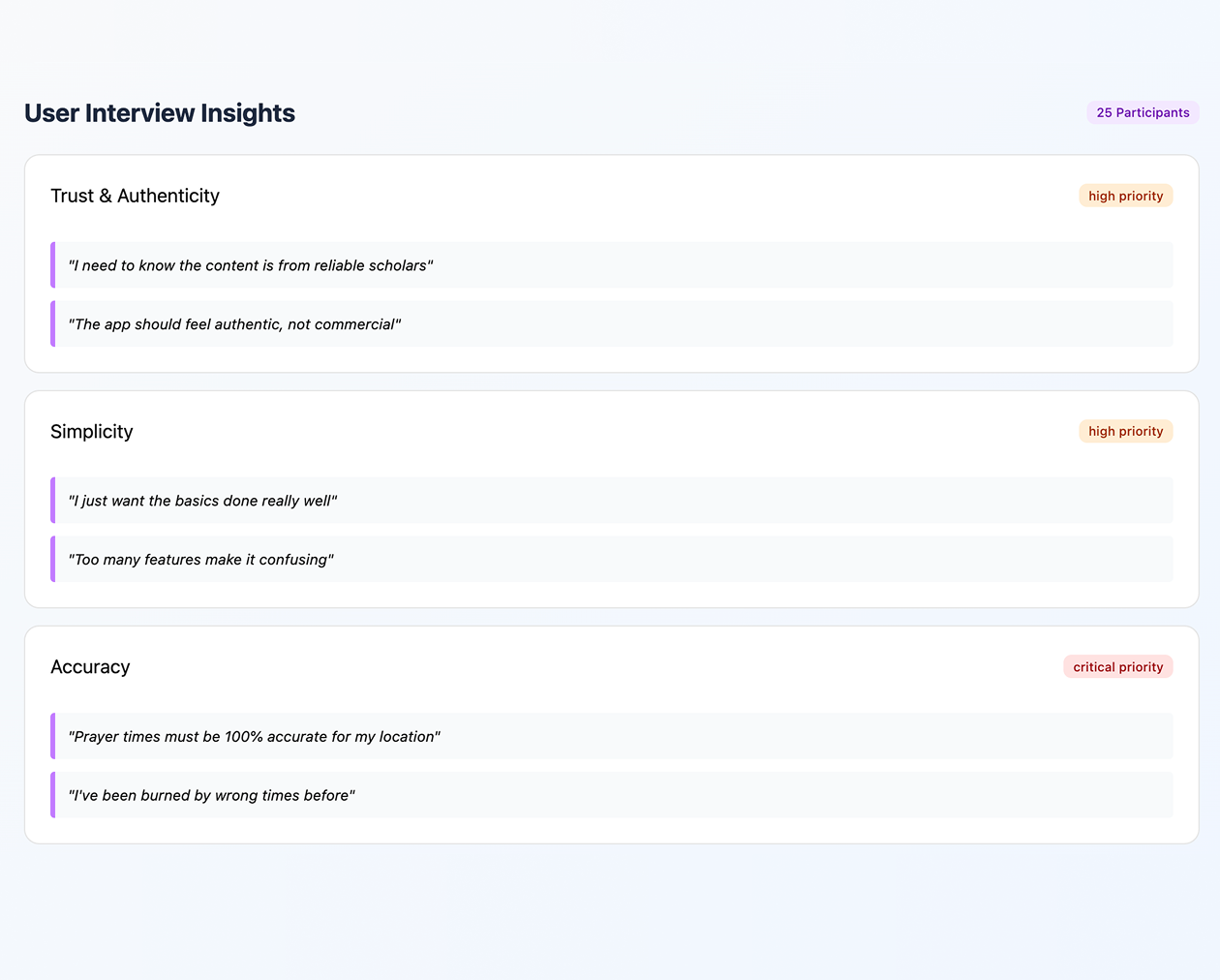
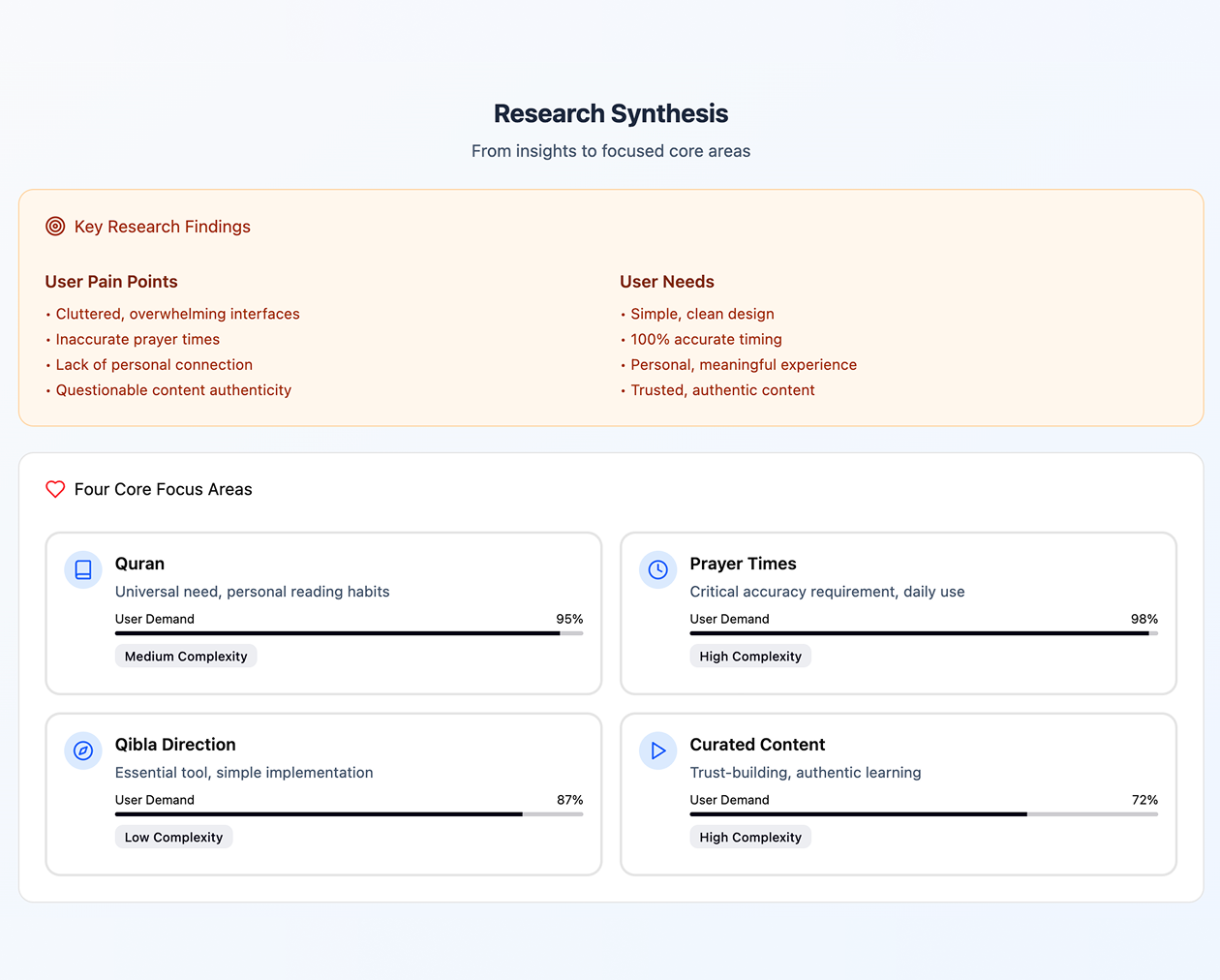
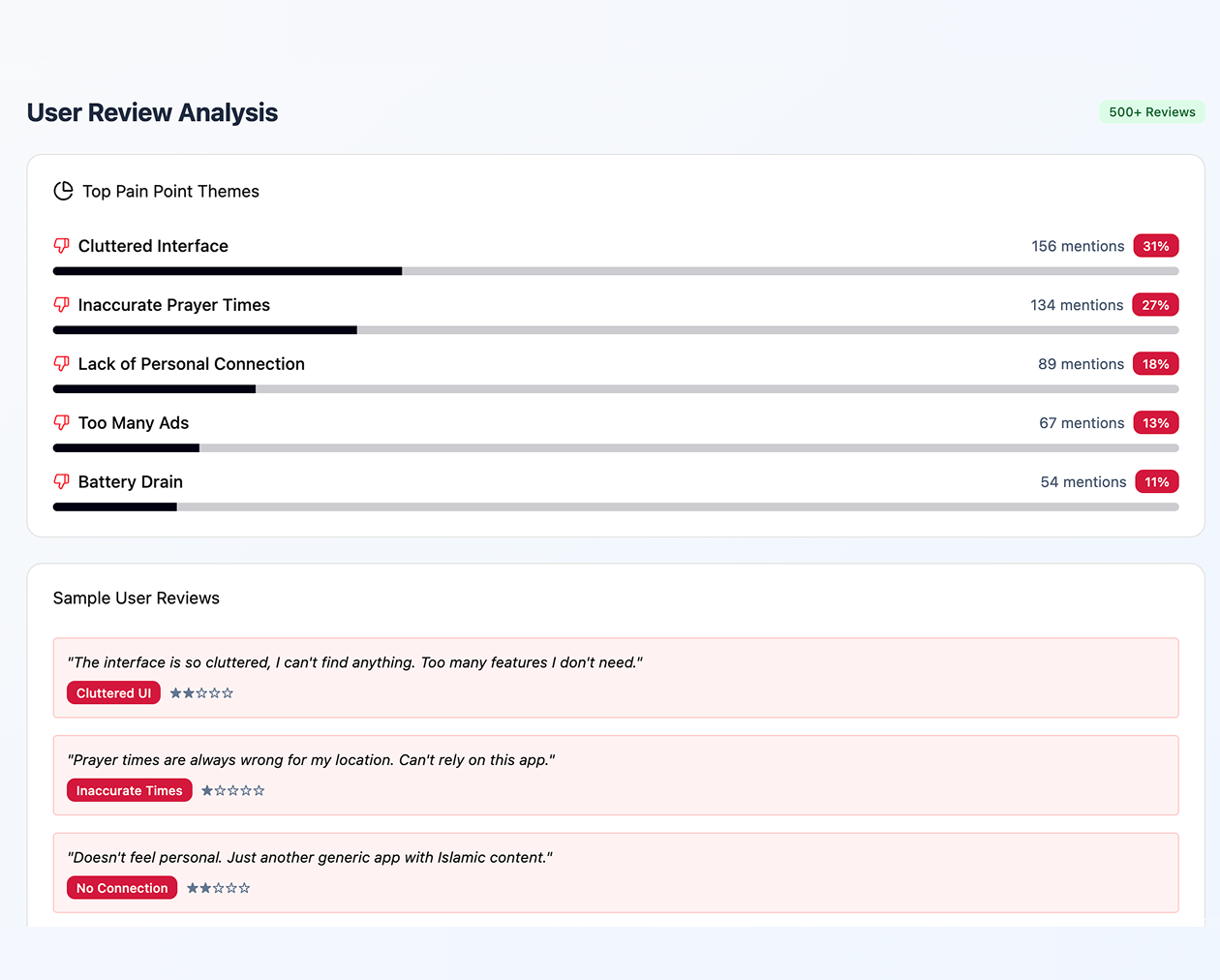
Reframing the Experience
With research in hand, I mapped out simplified user flows around daily habits like checking the next prayer time, reading a verse of the Quran, or finding the Qibla. I designed with intentional calm, using visual hierarchy, muted color palettes, and modular card layouts to reduce mental load.
I built wireframes, then worked closely with the dev team to review feasibility and adjust for technical constraints. Once aligned, I moved into high-fidelity design and created a design system with reusable components that made handoff more efficient.

Creating a Scalable System
To support consistency and speed across the app, I built a reusable component library in Figma that included buttons, forms, typography, and interactive elements all optimized for mobile. I documented behavior and layout rules, ensuring accessibility and scalability.
Working alongside developers, we aligned on naming conventions and interaction logic to create a clean, efficient build process with minimal guesswork.

Designing with Clarity & Agility
I developed clickable prototypes to test key flows such as onboarding, prayer time settings, and content navigation. I conducted usability testing with a small group of users from different age ranges and cultural backgrounds. Their feedback helped improve core UX patterns, such as surfacing the next prayer time more clearly, simplifying account setup, and improving contrast in dark mode.
Throughout the build phase, I collaborated closely with developers in weekly check-ins answering implementation questions, reviewing UI edge cases, and making real-time design tweaks to align with platform behavior.
Results & Outcomes
The redesigned app launched with a refined, intuitive experience that reflected both modern mobile standards and traditional faith values. Early users responded positively to the visual tone and seamless flow between spiritual content and daily tools.
Onboarding completion rates and session duration improved during testing, and the team received qualitative praise for the clarity and elegance of the UI. One tester told us: “It feels peaceful to use, like it was designed with care for how we practice.”

Reflection
Noor was a project that required both UX precision and cultural sensitivity. I had to design an experience that served functional needs—while also respecting the tone and purpose of faith-based content.
Being the only designer meant owning the big picture and the pixel details from discovery and strategy to interface polish and dev alignment. What made this project rewarding was seeing how thoughtful, inclusive design could support spiritual connection in a digital context.
.svg)
